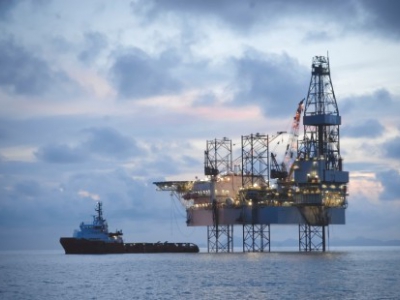Initiative on JIP will provide guidance on an alternative means of personnel transfer
The “Walk to Work” (W2W) approach, where offshore installations are manned from a ship via gangway, is being increasingly considered and used in the North Sea and other oil and gas regions to replace or supplement traditional manning methods such as helicopter, flotel or barge.
W2W manning can offer many significant benefits including:
- cost reduction;
- increased productivity;
- greater and more flexible man-hour delivery;
- additional bed space;
- resource sharing; and
- reduced worker major accident risk.
The ability to use W2W also provides an alternative to helicopters should, for example, there are exceptional circumstances that impacts helicopter availability.
W2W can take many forms ranging from a simple crew ferry between land and an offshore facility, to an integrated large multi-role vessel with helideck, hotel, rescue and recovery, diving, ROV and crane facilities, servicing and providing a number of offshore facilities whilst simultaneously performing other field activities.
The goal of the JIP is to develop and release W2W industry guidance within six months of the project beginning.
The JIP aims to capture, collate and further develop existing experience and material from a number of parties including offshore installation and vessel operators, gangway suppliers, and regulators. The JIP will also seek experience transfer from the emerging offshore wind industry which is actively researching W2W solutions to meet their need.
The JIP will develop guidance on all aspects of W2W, creating a foundation reference source that supports delivery of safe, efficient and cost-effective W2W manning solutions. The guidance will assist regulatory compliance and adherence to existing industry guidance such as the Oil & Gas UK/Step Change “Marine Transfer of Personnel” Guidelines.
DNV GL has been involved in W2W projects as a ship classification society, marine consultant, safety and regulatory compliance advisor, and in a wider risk management role.
Hamish Holt, Principal Consultant with DNV GL said: “To successfully select and implement a W2W solution needs considerable time and effort to work through a wide range of aspects. During operation it requires effective alignment, integration and collaboration between the installation operator, a vessel operator and a gangway provider, on a 24 hour basis in a dynamic environment heavily influenced by operational need and sea conditions. Most importantly, it requires buy-in from the W2W workforce as well as from industry regulators.
“We know W2W manning of installations have been, and currently are being, undertaken to varying degrees of success and we do not want to re-invent the wheel. This JIP aims to bring together the most up to date feedback, experiences and lessons learnt, in order to assist those involved in a W2W project understand the issues and make appropriate decisions. The produced guidance will not be prescriptive; instead it will aim to give information and guidance to allow individual organisations to develop their own W2W solution.”
Source: DNV GL




























































